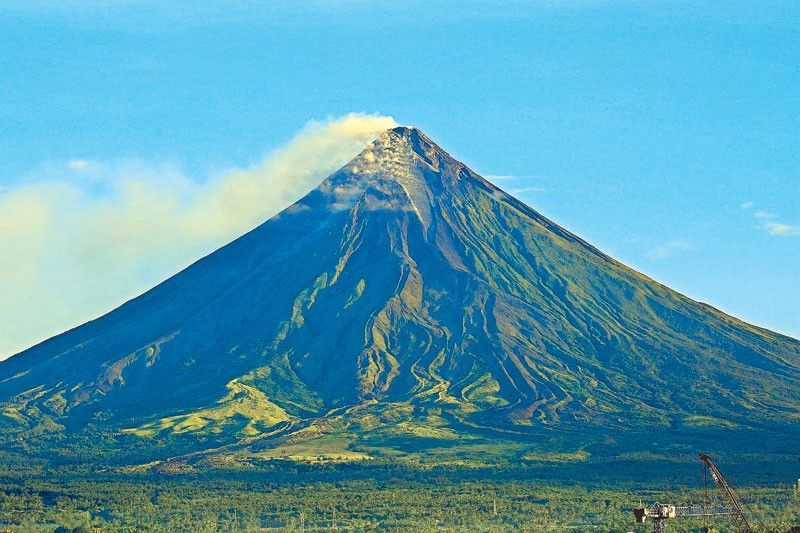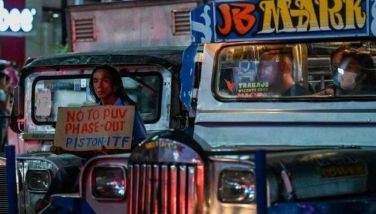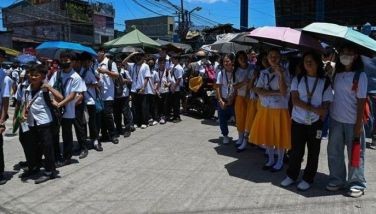Sustained lava flows, collapsed debris cascade farther down Mayon

LEGAZPI CITY, Philippines — As its effusive eruption continues, lava flowing from Mayon Volcano has cascaded 1,500 meters from the summit crater, while collapsed debris were deposited 3,300 meters downslope in the last 24 hours since Friday.
With the Philippine Institute of Volcanology and Seismology (Phivolcs) recording 280 rockfall events and two volcanic earthquakes, the very slow effusion of lava from the summit crater continued to feed the lava flows and collapsed debris in the Mi-isi (south) Gully in Daraga town and the Bonga Gully (southeastern) in this city.
Apart from nine dome-collapse pyroclastic density currents (PDC) that lasted two to four minutes each, Phivolcs also monitored continuous moderate degassing from the summit crater and sulfur dioxide emissions averaging 978 tons per day.
Paul Alanis, Phivolcs resident volcanologist at the Lignon Hill Observatory, here, said that based on the full view of Mayon, fresh lava continues to quietly ooze out of the crater in a sustained 24-hour duration.
“With this condition, it is not a remote possibility that lava could flow beyond the six-kilometer permanent danger zone (PDZ). But as of now, the present lava fronts are still far from the PDZ,” Alanis told The STAR.
Alanis recalled that in the 2006 eruption of Mayon, there was a “prolonged lava oozing” that reached as far as seven kilometers, stopping only in Barangay Mabinit. That spot is now a famous tourist spot called “The Lava Wall.”
But Alanis was quick to allay fears of lava flowing beyond the danger zone at this time, explaining that lava flows at a very low speed – if not even turning stationary – when reaching less inclined ground.
Alert Level 3 is still maintained over Mayon Volcano, a condition that comes with the warning of a “possible hazardous eruption within weeks or even days” due to the high level of unrest as magma is in the crater.
Since June 8, when the alert level was raised, a total of 19,791 individuals have been evacuated from the 6-km PDZ radius of the volcano, which is at risk of lava flows, rockfalls, PDCs and other volcanic hazards.
Eugene Escobar, officer-in-charge of the Albay Public Safety and Emergency Management Office (Apsemo), said these 5,746 families were displaced from Daraga, Camalig, Guinobatan, Sto. Domingo, Malilipot, Tabaco City and Ligao City and are now sheltered in different evacuation centers in Albay.
Phivolcs has also called for vigilance against sediment-laden streamflows along channels draining the edifice as rainfall could generate lahar.
Recently, ashfall incidents from PDCs were reported in Sitio Buga, Barangay Nabonton in Ligao City and in Purok 7, Barangay San Francisco in Guinobatan.
National parks
Meanwhile, the Office of Civil Defense (OCD) is suggesting the conversion of PDZs around the country’s active volcanoes into national parks to permanently keep residents out of risk and solve the never-ending cycle of evacuating them each time there is volcanic unrest.
Addressing the media at the Saturday News Forum at Dapo Restaurant and Bar in Quezon City, OCD Administrator Ariel Nepomuceno said the suggestion came up when officials met on the ongoing disaster mitigation and response efforts for Mt. Mayon last Thursday.
Asked if the suggestion was only for the six-km PDZ around Mayon, Nepomuceno, speaking in Filipino, replied: “In my opinion, I think it’s necessary [for all active volcanoes] because the danger posed by volcanoes is the same for all, so all of that should be taken into consideration.”
Phivolcs director Teresito Bacolcol said at the same media forum that the country has 24 active volcanoes.
Nepomuceno said Mayon’s latest volcanic episode has displaced at least 9,571 families living in 26 barangays within the PDZ and they will have to stay at evacuation centers not just for weeks, but several months.
This situation, he said, takes a toll on those who are affected and also drains the government’s resources every time the volcano acts up.
By converting PDZs into national parks residents will no longer reside in these high-risk areas.
Nepomuceno said the discussions on the matter are still “informal talks.” — Romina Cabrera, Emmanuel Tupas, Jose Rodel Clapano
- Latest
- Trending
































